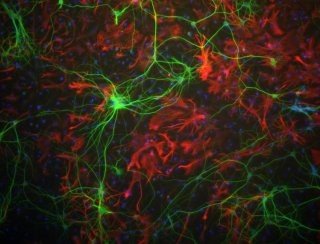EPA Scientists Contribute to Paper in Nature that Shows Common Household Chemicals May Disrupt Brain Development
Published April 16, 2024

There are many existing chemicals that have incomplete data about their potential toxicity and effects on human health. Children are a particularly susceptible population and chemical exposure can disrupt critical periods in their development, especially brain development.
EPA scientists contributed to the development of data on over 1,800 compounds using a high-throughput developmental screen. Their research determined that quaternary compounds, a class of chemicals that are common in personal care products and disinfectants, may disrupt brain development in children. The findings were published in Nature.
High-throughput screening is a process that allows scientists to quickly test chemicals to see how they interact with a specific biological target or cell type. After screening over 1,800 compounds, researchers identified quaternary compounds as a class that may affect oligodendrocytes by impacting cell health. Oligodendrocytes are a type of cell in the central nervous system. Oligodendrocytes play an important role in neuron function and longevity and their disruption can lead to cognitive and motor disability. Additionally, some organophosphate flame retardants disrupted oligodendrocyte growth in a cell-based, in vitro model. Organophosphate flame retardants are commonly found in household items such as furniture and electronics.
While oligodendrocytes are crucial for brain development, their susceptibility to various chemicals has been studied less than other brain cells, such as neurons. This high-throughput screen is a first step in identifying chemicals that may affect oligodendrocyte development and shows how these methods can be used to identify potentially toxic chemicals quickly and efficiently.
The study suggests quaternary compounds and organophosphate flame retardants impact oligodendrocyte health in in vitro models, but further research is needed to confirm effects and determine the full impact of exposure. High-throughput screening is a powerful tool but it is only one part of EPA’s tiered toxicity testing strategy that prioritizes chemicals based on bioactivity so they can be tested with more traditional methods.
EPA scientists are leading and contributing to chemical safety research as part of their mission to protect human health and the environment.
Learn more about the science:
